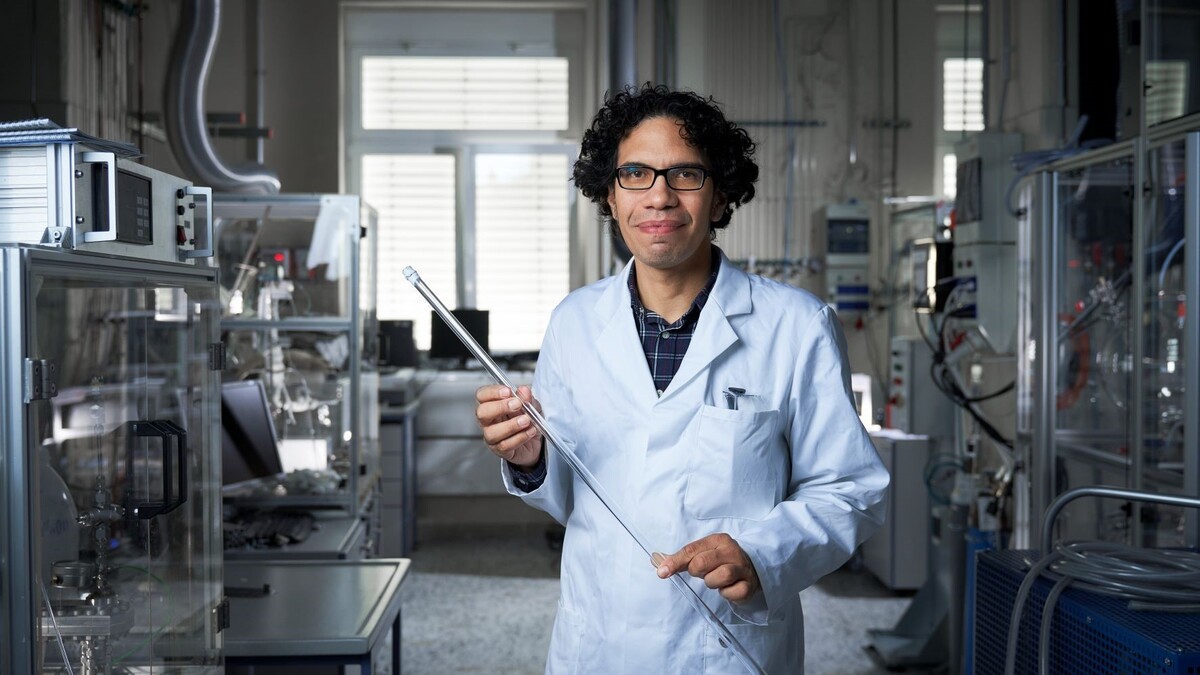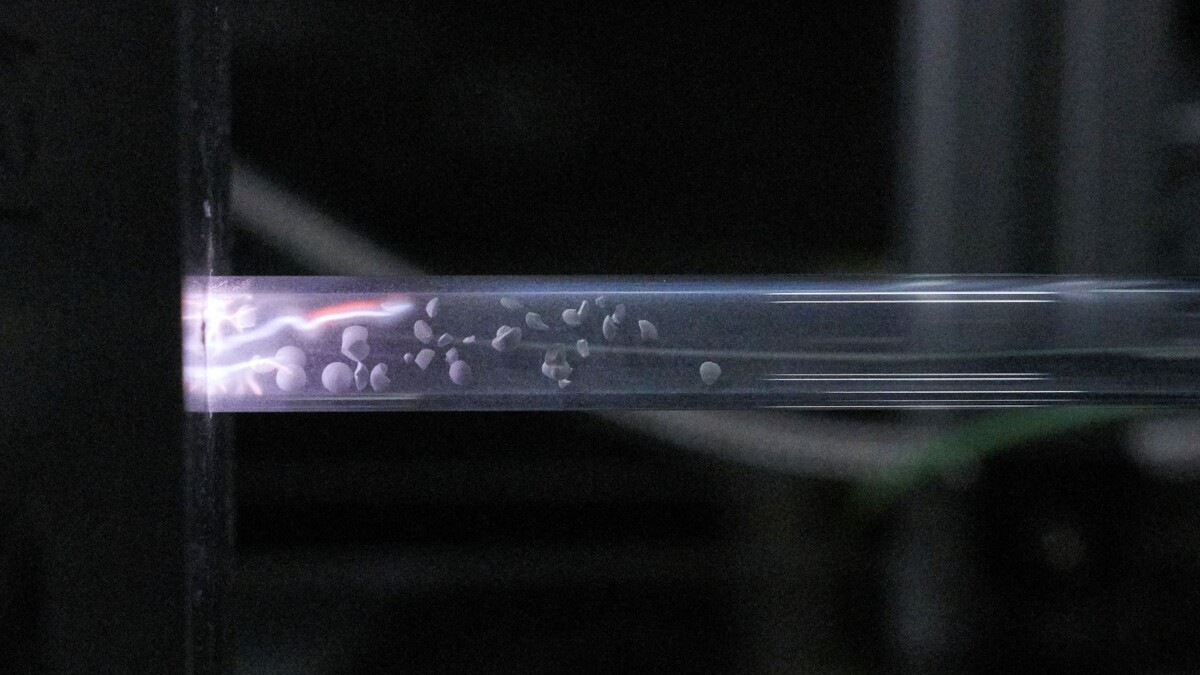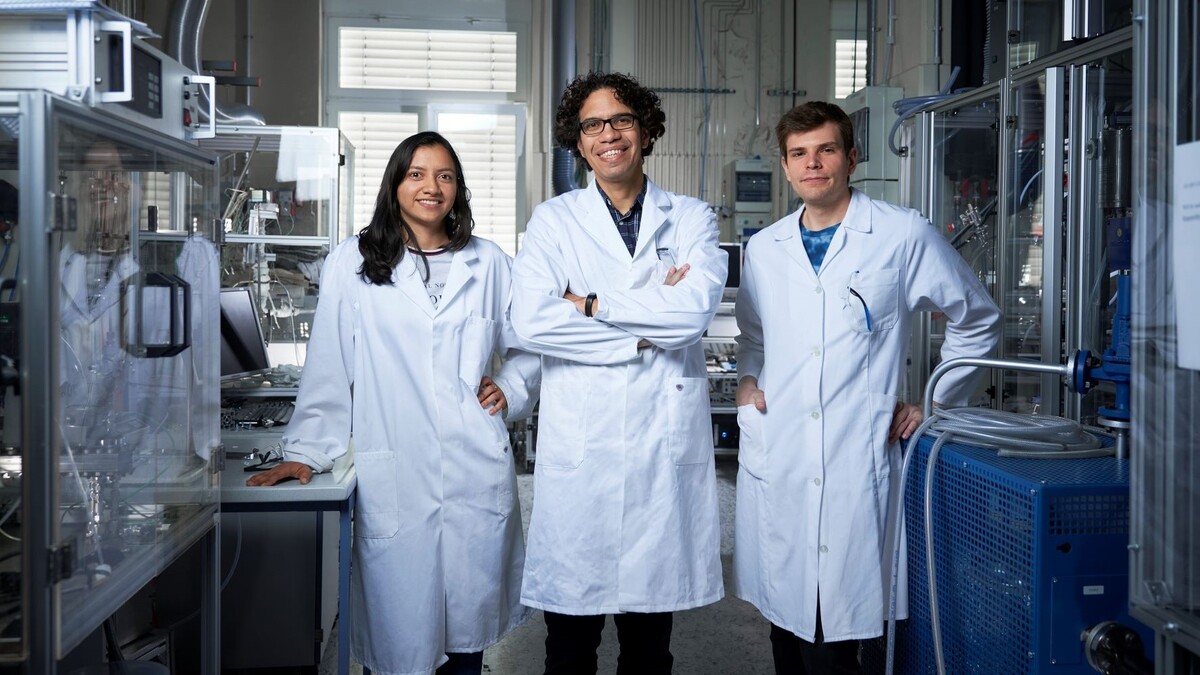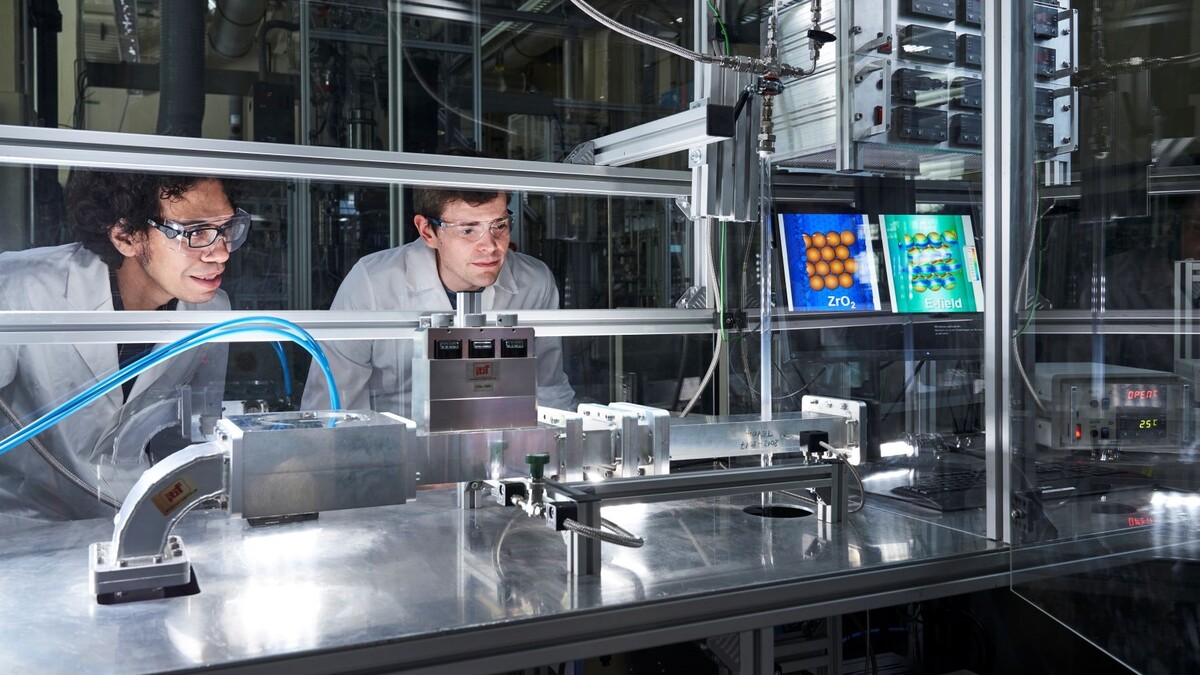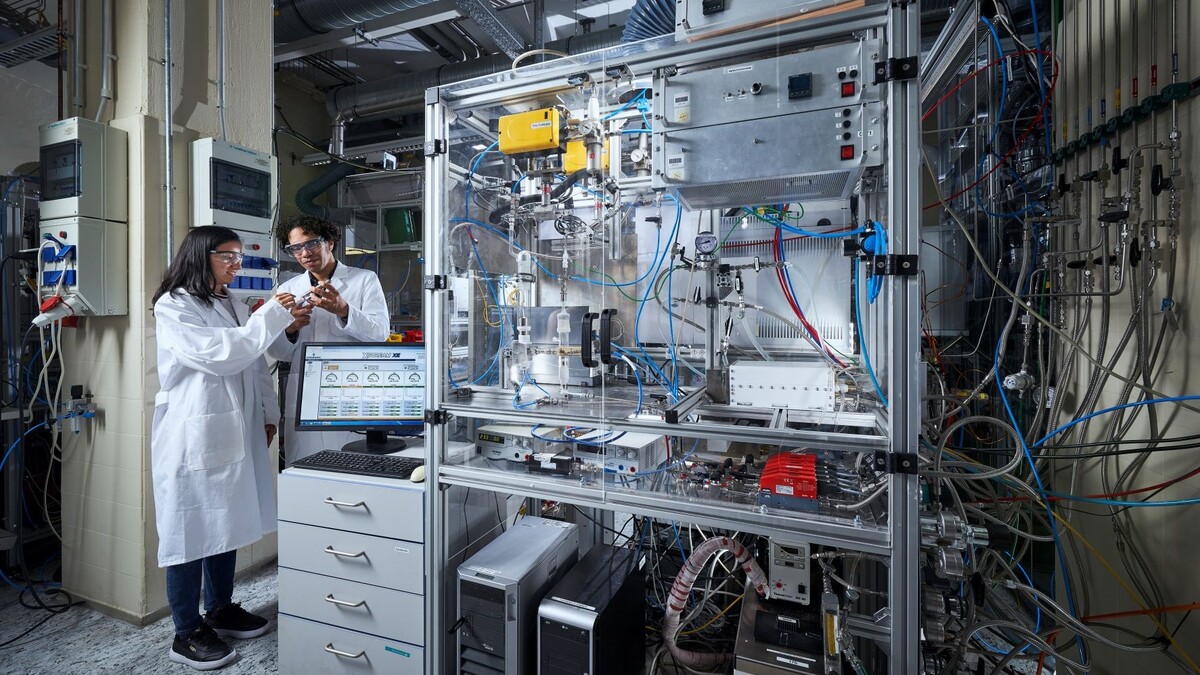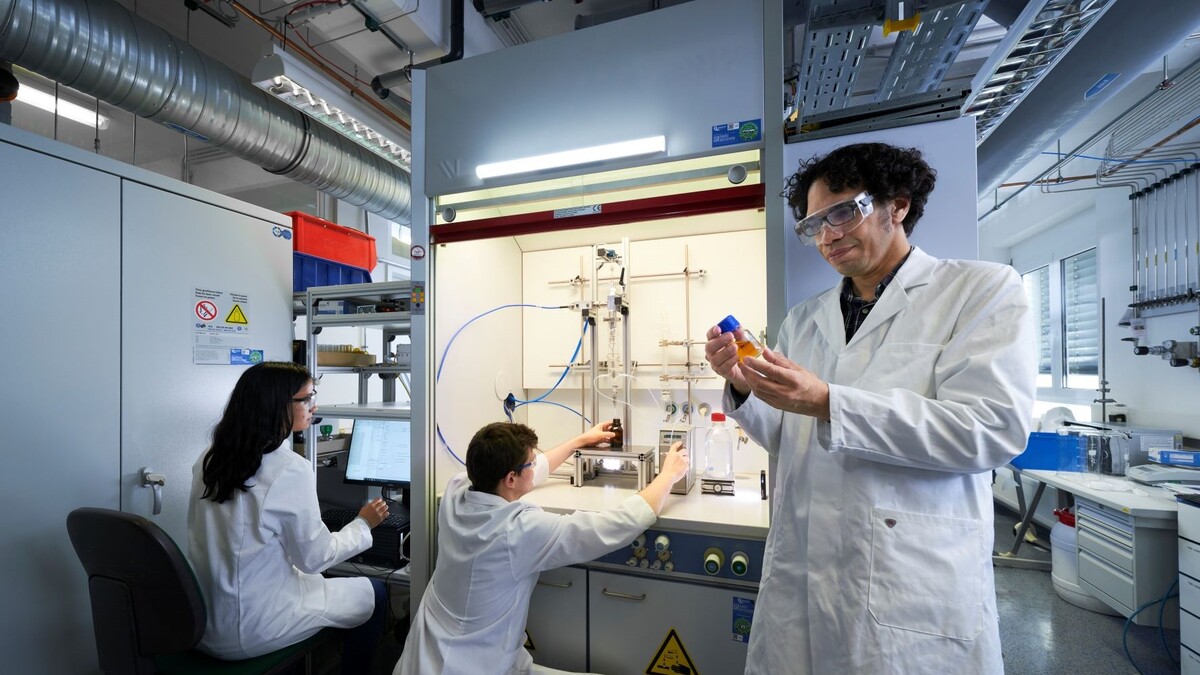Picture a Scientist - Portrait Alexander Navarrete Muñoz
The Plasma Summoner
Igniting in a glaring flash, the plasma shines like a lilac flame in the quartz glass tube. Plasma is the name of the fourth state of matter: A quasi-neutral mixture of molecules, electrons, ions, radicals and excited species. Plasmas can be created by an electric discharge in a gas and then it starts, highly energetic electrons impact other species present in the gas creating often a very reactive cocktail.
Dr. Alexander Navarrete Muñoz experiences this fascinating process practically on a daily basis. He creates plasma using microwaves in compact reactors in his laboratory research at KIT’s Institute for Micro Process Engineering (IMVT) in collaboration with the Institute for Pulsed Power and Microwave Technology (IHM). Plasma reactors have several different uses, including disinfection, supporting wound healing, treating material surfaces, or even producing synthetic diamonds. But Alexander Navarrete Muñoz uses microwave plasma reactors to transform the harmful greenhouse gas carbon dioxide (CO2) into useful chemicals and energy carriers.
Microwaves Induce the Fourth State of Matter
“Green technologies have enormous potential”, explains the researcher, who is born in Colombia. Long before the Paris climate agreement, the now 45-year-old Navarrete Muñoz began looking into renewable energy, chemo-catalytic conversion, and the integration of both in innovative reactor concepts. These include among others the microwave plasma reactors, which do not use scarce catalytic materials and work efficiently – the temperature can be modulated with nanosecond-scale pulses. In the plasma, carbon dioxide, which is produced during combustion processes in power plants, as well as in the cement, steel and glass industry, is split up into carbon monoxide and oxygen. Carbon monoxide can be converted into basic materials of the chemical industry, combined with hydrogen, it is used as a synthesis gas in several different chemical syntheses such as fuels. In addition, these conversion products open up new opportunities to store energy from fluctuating renewable energy sources such as solar or wind.
In their laboratory, Navarrete Muñoz and his team test different versions of microwave plasma reactors with combinations of carbon dioxide, water, argon or nitrogen, in addition the conversion of methane into useful compounds is being explored. Reactors with ultrafast pulsed microwaves proved especially efficient. Additionally, Navarrete Muñoz works on a catalytic reactor, in which atmospheric microwave plasma comes into direct contact with a catalyst. A patent has been filed, and a first prototype is tested.
Chemical Engineer Follows Vision of “Fossil to Renewable”
With this and other works, the chemical engineer contributes to closing the carbon cycle – emitted carbon dioxide is in turn used on the production of chemical precursors and fuels. He already had this vision of “fossil to renewable” during his studies at the Universidad Nacional de Colombia, his doctorate at the Universidad de Valladolid (Spain), and his postdoc at the TU Delft (Netherlands). During the course of his research, he developed novel procedures for energy storage and the utilization of CO2 and residual biomass. In 2017, Dr. Alexander Navarrete Muñoz arrived in Karlsruhe. As a cyclist, he enjoys how green the city is. As a researcher, he enjoys the high-tech infrastructure at KIT, the pooled expertise, and the freedom to develop one’s own ideas. “I’m a fully engaged scientist. Whatever I see – I look for how it works and how it could work even better.”
Text: Dr. Sibylle Orgeldinger; Translation: Heidemarie Knierim

